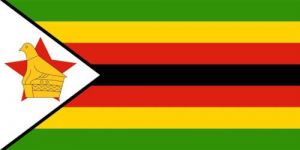Language/Shona/Grammar/Adjectives
Hi Shona learners! 😊
In this lesson, we will dive into the world of adjectives. We will learn what they are, how to use them, and some fun facts about adjectives in Shona culture. Let's get started!
Once you've mastered this lesson, take a look at these related pages: Learn about Gender in Shona Grammar, Adjectives and Adverbs, 0 to A1 Course & Pronouns.
What are Adjectives?[edit | edit source]
Adjectives are words that are used to describe or modify nouns. In Shona, adjectives come directly before the noun they describe. For example, "mudzimu unobva muAfrica" means "the spirit comes from Africa". In this sentence, "muAfrica" is the adjective because it describes the origin of the spirit.
In Shona, adjectives are not inflected for gender or number. This means that they do not change form to match the gender or number of the noun they describe. For example, "mwana ane rudo rufema" means "the child has a kind heart", regardless of whether the child is male or female.
Adjective Placement[edit | edit source]
As mentioned earlier, adjectives in Shona come before the noun they describe. However, there are a few exceptions. Some adjectives, such as "hwai" (other) and "pakuipa" (bad), come after the noun. For example, "vana vangu vahu hwai" means "my other children", and "nyama yangu yakura pakuipa" means "my meat is bad".
Additionally, when using multiple adjectives to describe a noun, the general rule is to place the adjective that describes size or quantity first, followed by the one that describes quality, and then the one that describes origin or other similar qualities. For example, "nyama nhema yakanaka yababa vakuru" means "the nice big meat of the old man".
Comparatives and Superlatives[edit | edit source]
In Shona, comparatives and superlatives are formed by adding the prefixes "ku-" and "mu-" respectively to the adjective. For example, "chibhakera" (hot) becomes "kuchibhakera" (hotter), and "muchibhakera" (hottest).
Examples[edit | edit source]
Here are a few examples of adjectives in Shona:
| Shona | English Translation |
|---|---|
| mudzimu | spirit |
| rudo rufema | kind heart |
| mwana | child |
| nhema | nice |
| baba vakuru | old man |
Dialogue[edit | edit source]
Here is a dialogue to demonstrate the use of adjectives in a conversation:
- Person 1: Ndimi muri vairi muchangochirevo here? (Are you guys the pilots that will fly us?)
- Person 2: Aiwa, tiri kuenda kunopedza chirasi idzi dzinopisa kusvibisa pamafuta pava baba. (No, we're going to fix those issues that cause turbulence in the old man's plane.)
In this dialogue, "vairi" (pilots) is an adjective that describes the people who fly the plane, while "pava baba" (in the old man's) describes the source of the problem.
Cultural Significance[edit | edit source]
Adjectives are an important part of Shona culture because they are used to describe a wide range of things, from people and animals to food and scenery. Shona speakers tend to use many adjectives in their everyday conversations, which helps to create vivid and detailed descriptions.
Additionally, in Shona culture, adjectives are often used to express emotions or attitudes towards a particular person or thing. For example, calling someone "mhata" (ugly) can be seen as an insult, while calling someone "hupenyu hwavo harufu" (they have a good life) is considered to be a compliment.
Practice Exercise[edit | edit source]
To improve your understanding of adjectives in Shona, try translating the following sentences:
1. The big house 2. The hot sun 3. The beautiful flowers 4. The good student 5. The tall trees
Conclusion[edit | edit source]
In conclusion, adjectives are an important part of the Shona language. They allow speakers to create vivid and detailed descriptions, and express emotions and attitudes towards a variety of things. Remember to use the correct placement and formation of adjectives, and don't be afraid to add a few extra descriptive words into your conversations!
➡ If you have any questions, please ask them in the comments section below.
➡ Feel free to edit this wiki page if you think it can be improved. 😎
Finished this lesson? Check out these related lessons: Say Hello and Greetings in Shona, Connecting Sentences & Past Tense.
Other Lessons[edit | edit source]
- Negation
- Plurals
- Conditional Mood
- Gender
- How to Use Have
- Questions
- Give your Opinion
- How to Use Be
- Pronouns
Sources[edit | edit source]
- Shona Adjectives | LEARN101.ORG
- Adjectives, Be Verbs, and Derterminers in Manyika Shona
- The Shona Adjective as a Prototypical Category | Semantic Scholar

